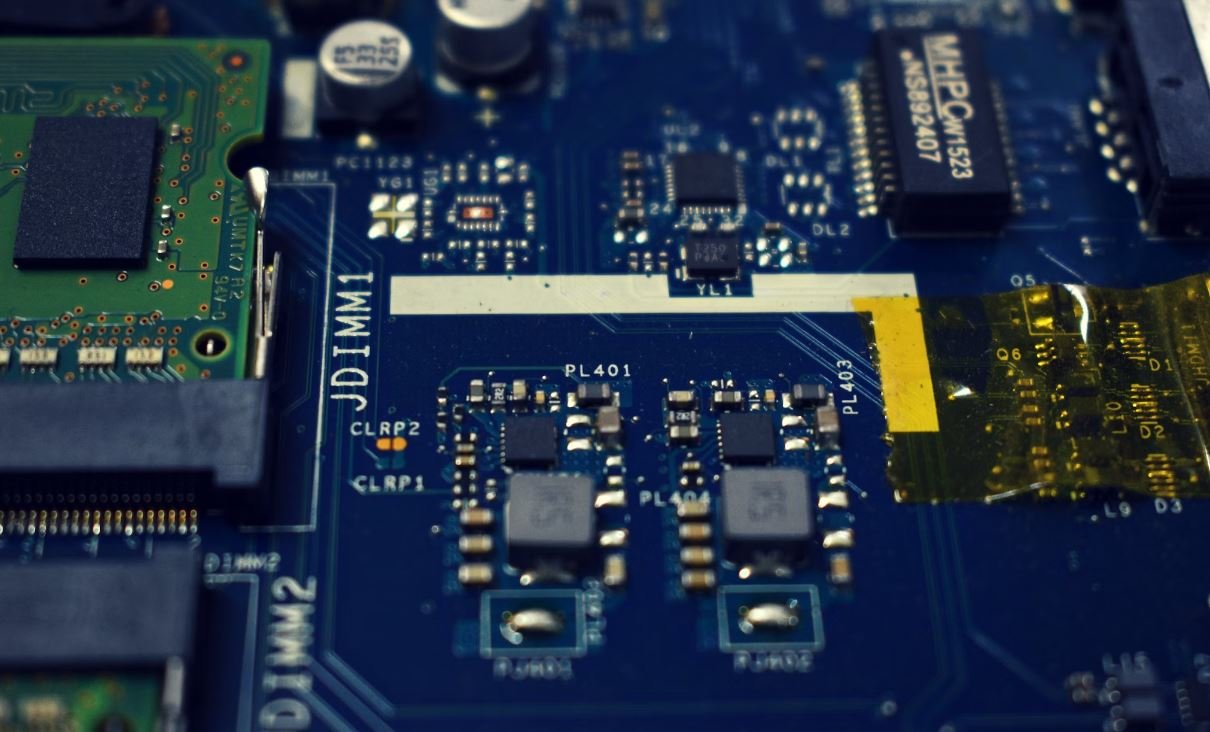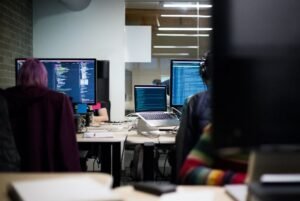AI Automation and the Future of Work: McKinsey
Rapid advancements in Artificial Intelligence (AI) and automation technologies are reshaping the future of work. As businesses strive for enhanced efficiency, reduced costs, and increased productivity, the integration of AI is becoming inevitable. A recent report by McKinsey highlights key trends and insights into the impact of AI automation on jobs and industries.
Key Takeaways:
- AI automation is expected to transform nearly every industry.
- The adoption of AI automation could lead to job displacement.
- AI can complement human work, resulting in higher productivity and improved decision-making.
- Upskilling and retraining of the workforce is crucial to thrive in the AI-powered future.
- Collaboration between humans and AI can drive innovation and new opportunities.
According to the report, AI automation has the potential to reshape up to 45% of the activities carried out by individuals across various industries. While certain tasks are more susceptible to automation, the role of humans in higher-level cognition, creativity, and emotional intelligence remains essential. *As AI takes over repetitive tasks, humans can focus on more complex and strategic activities.* Organizations need to find the optimal balance between automation and human expertise to maximize productivity and results.
The Impact of AI Automation on Jobs and Industries
The integration of AI automation technology will inevitably lead to changes in the workforce structure and job requirements. *Automation will result in the decline of certain job categories and the emergence of new, more specialized roles.* However, the overall impact on employment is projected to be complex, with some jobs being transformed while others are created.
McKinsey’s research estimates that up to 800 million workers worldwide could potentially be displaced by automation and need to find new occupational categories. It is critical for individuals and organizations to adapt by enhancing their skills and embracing lifelong learning opportunities. The ability to continuously upskill and retrain in an ever-evolving job market will become a key factor in navigating the future of work.
Data-driven Insights on AI-Enabled Automation
| Industry | Automation Potential (%) |
|---|---|
| Manufacturing | 73% |
| Accommodation and Food Services | 72% |
| Wholesale and Retail Trade | 64% |
The manufacturing industry represents the greatest potential for AI-enabled automation, with a projected automation potential of 73%. This suggests that a significant number of manufacturing tasks can be performed by AI systems and robots. Other industries with high automation potential include accommodation and food services (72%) and wholesale and retail trade (64%). These figures highlight the importance of preparing and adapting to the changes brought about by AI automation in various sectors.
Collaboration between Humans and AI
- AI systems can provide valuable insights for decision-making, but human judgment and creativity are still crucial.
- The combination of human expertise and AI augmentation can lead to innovative solutions and improved outcomes.
- Building trust and transparency in AI systems is essential to ensure effective collaboration and mitigate potential bias.
A successful future of work requires people and AI working together in a collaborative and complementary manner. The symbiotic relationship between humans and AI can drive innovation and open up new opportunities. To fully leverage the potential benefits of AI, organizations need to foster an environment of trust, transparency, and ethical AI practices.
Preparing for the Future: Upskilling and Reskilling
| Skills in Demand | Projected Growth (%) |
|---|---|
| Advanced IT and Programming | 55% |
| Data Analysis and Interpretation | 48% |
| Creativity and Emotional Intelligence | 47% |
To thrive in an AI-powered future, individuals need to actively pursue upskilling and reskilling opportunities. The demand for advanced IT and programming skills is projected to grow by 55%, followed by data analysis and interpretation skills (48%) and creativity and emotional intelligence (47%). By continuously developing these skills, individuals can better adapt to changing workplace dynamics and secure future job prospects.
In conclusion, the integration of AI automation is reshaping the future of work across industries. While some jobs may be displaced, new opportunities are emerging. Collaboration between humans and AI can lead to innovative solutions, and upskilling/retraining is crucial for individuals to thrive in the AI-powered landscape. As we navigate this transformative era, embracing the potential of AI while adapting our skills and mindset becomes imperative.

Common Misconceptions
Misconception 1: AI Automation will Lead to Mass Unemployment
One common misconception surrounding AI automation is the fear that it will result in widespread unemployment. While it is true that certain tasks and jobs will be automated, this does not necessarily mean that humans will be completely replaced in the workforce.
- AI automation can actually create new job opportunities as it brings about the need for specialized skills in managing and maintaining AI systems.
- Studies suggest that although some jobs may be lost, new roles and industries will emerge.
- The impact of AI automation on the labor market will likely vary across different sectors and professions.
Misconception 2: AI Automation is Only Relevant for Low-skilled Workers
Another misconception is that AI automation primarily affects low-skilled workers. While it is true that some routine-based and repetitive tasks can be easily automated, AI automation is also relevant for high-skilled workers and professionals.
- AI technologies can enhance productivity and decision-making in various industries such as healthcare, finance, and law.
- High-skilled workers can benefit from AI automation by leveraging it to augment their capabilities and focus on more complex problem-solving.
- Advancements in AI are expected to have a profound impact on knowledge-intensive fields, requiring workers to adapt and acquire new skills.
Misconception 3: AI Automation Equals Complete Autonomy
Many people misconceive AI automation as completely autonomous systems that can operate without human involvement. While AI technologies can perform certain tasks independently, they still require human interaction and oversight in most cases.
- Humans play a crucial role in designing, training, and monitoring AI systems to ensure they operate ethically and in line with desired outcomes.
- AI algorithms often require human intervention to handle complex or novel situations that they have not encountered before.
- Collaboration between humans and AI automation is key to achieving optimal results in many scenarios.
Misconception 4: AI Automation Will Happen Overnight
Another common misconception is that AI automation will suddenly happen overnight and drastically transform the workforce. However, the process of implementing AI automation is gradual and requires careful planning and consideration.
- The adoption of AI technologies will be a gradual process, allowing organizations and workers to adapt and upskill accordingly.
- AI automation implementations will face challenges and limitations, needing iterations and improvement over time.
- The pace of AI adoption will vary across industries and businesses, depending on factors such as cost, feasibility, and regulatory frameworks.
Misconception 5: AI Automation Is All about Replacing Humans
One misconception is that AI automation is solely focused on replacing human workers. In reality, the goal of AI automation is to augment human capabilities and improve efficiency, rather than eliminating the need for human labor altogether.
- AI technologies can assist workers in completing tasks more efficiently and accurately, leading to increased productivity.
- Through AI automation, humans can focus on more creative and complex aspects of their work, while delegating repetitive and mundane tasks to machines.
- The synergy between humans and AI automation can potentially lead to enhanced job satisfaction and overall job quality.

The adoption of artificial intelligence (AI) and automation technologies is rapidly reshaping the landscape of work across industries. McKinsey estimates that by 2030, up to 375 million workers (or roughly 14% of the global workforce) may need to switch occupations or acquire new skills due to the impact of automation. In this article, we explore various aspects of AI automation and its implications for the future of work through ten interactive and visually appealing tables.
1. Top Ten Occupations at High Risk of Automation
– This table presents the top ten occupations most susceptible to automation, based on McKinsey’s analysis. It highlights the potential disruption to jobs in the near future and enables readers to ascertain if their own occupation falls within this list.
2. Global GDP Growth Projections vs. Est. Economic Impact of Automation
– A comparison between projected global GDP growth rates and the estimated economic impact of automation showcases the potential trade-off in the future. It emphasizes the need for strategic planning to maximize the benefits of AI automation and minimize potential negative effects.
3. Industry Distribution of Jobs Potentially Vulnerable to Automation
– This table provides an overview of how jobs susceptible to automation are distributed across various industries. Readers can gain insights into which sectors are likely to experience significant workforce transformation and focus on areas that may offer relatively more secure employment.
4. Technological Capability by Industry
– By analyzing the technological capability of different industries, this table illuminates the readiness of sectors to adopt automation technologies. It helps readers gauge how quickly their industry might adopt AI automation and adapt their skills accordingly.
5. Countries Most Likely to Be Affected by Automation
– Presenting a ranking of countries based on the potential impact of automation, this table showcases the global disparities in vulnerability. It highlights regions that may face greater challenges in transitioning their workforce while underscoring the need for targeted policies and interventions.
6. Top Five Jobs Gained through Automation
– While AI automation may eliminate certain jobs, it also opens up new opportunities. This table highlights the top five job categories that are likely to be created or expanded by automation, offering readers a glimpse into the potential fields for future employment.
7. Impact of Automation on Wage Share by Occupation
– Analyzing the potential impact of automation on wage shares across different occupations, this table illustrates the potential income disparities that could arise in a highly automated future. It underscores the importance of upskilling workers to ensure equitable distribution of opportunities.
8. Skills and Educational Requirements for Jobs Gained through Automation
– Providing insights into the skills and education needed for jobs that are anticipated to be created or enhanced by automation, this table highlights the areas individuals should focus on to increase employability and thrive in the changing job market.
9. Workers’ Perceptions on Automation
– This table explores workers’ perceptions regarding the impact of automation on their job security and future career prospects. It acknowledges the psychological dimensions of AI automation and creates awareness of the concerns and aspirations held by employees.
10. Policies and Strategies for Workforce Transitions
– Addressing the imperative of managing workforce transitions in the era of AI automation, this table outlines potential policies and strategies at the national and organizational levels. It serves as a guide for policymakers, employers, and individuals to navigate the evolving employment landscape effectively.
In conclusion, the advent of AI automation carries the potential to revolutionize work as we know it. While certain jobs may be at risk of redundancy, new opportunities will arise, demanding individuals to adapt their skill sets and educational pursuits. It is crucial for policymakers, businesses, and individuals to proactively anticipate and embrace this transformation to ensure a smooth transition and a future where humans and machines can effectively collaborate, foster innovation, and drive economic growth.
AI Automation and the Future of Work: McKinsey
Frequently Asked Questions
How will AI automation impact the future of work?
What are some examples of AI automation in the workplace?
Will AI automation replace human jobs completely?
How can individuals prepare for AI automation in the workplace?
What are the potential benefits of AI automation for businesses?
What are the potential risks of AI automation in the workplace?
Are there any regulatory frameworks in place for AI automation?
Can AI automation enhance job satisfaction and employee well-being?
What role does human judgment play in AI automation?
How can businesses ensure responsible and ethical AI automation?





